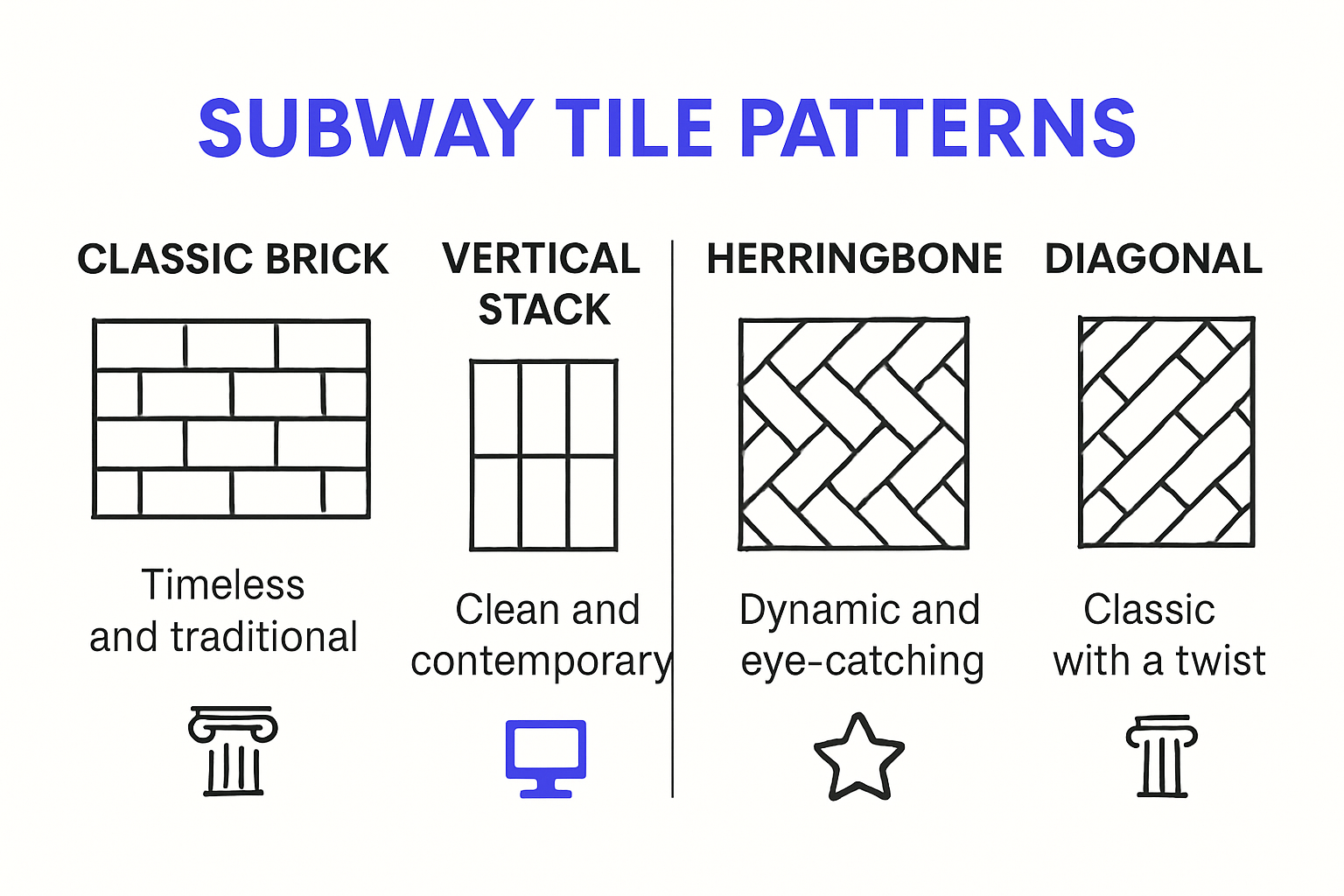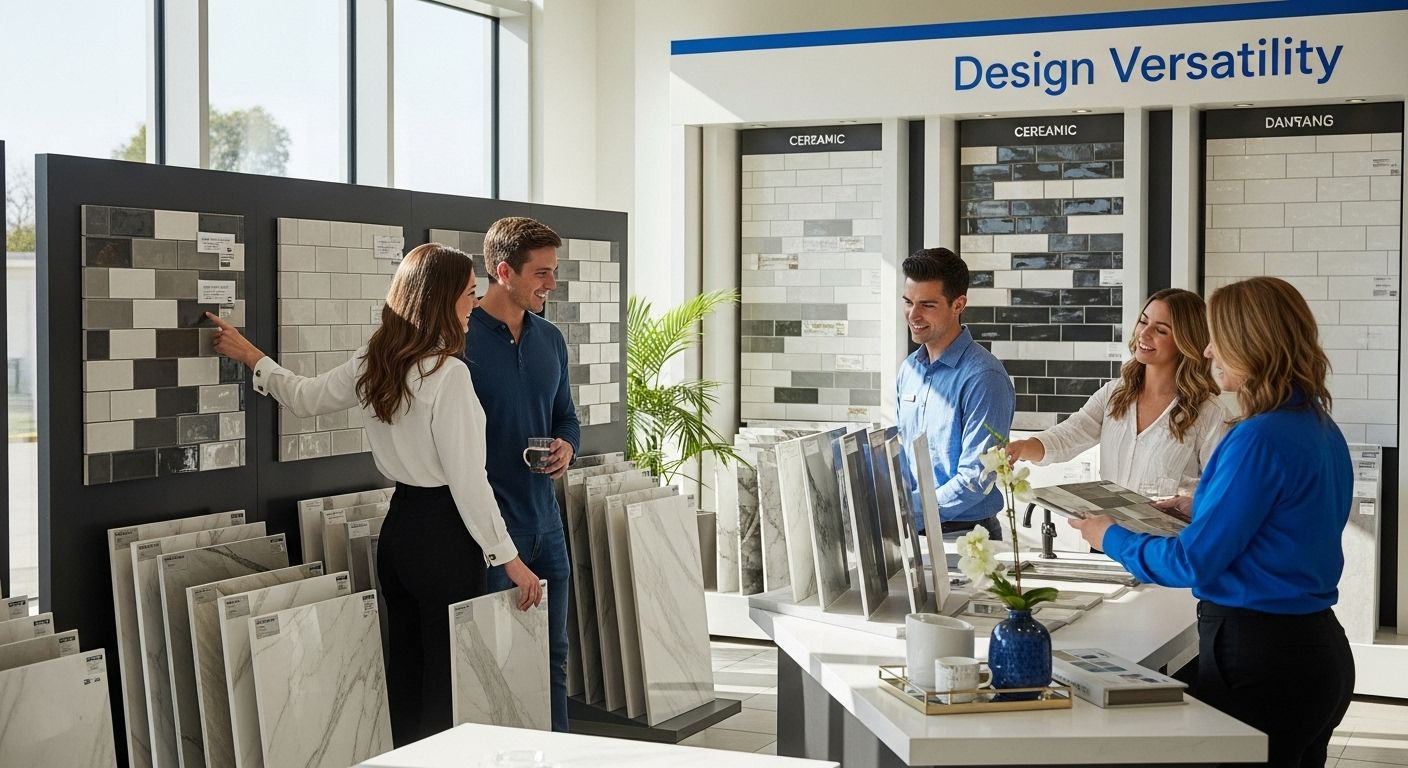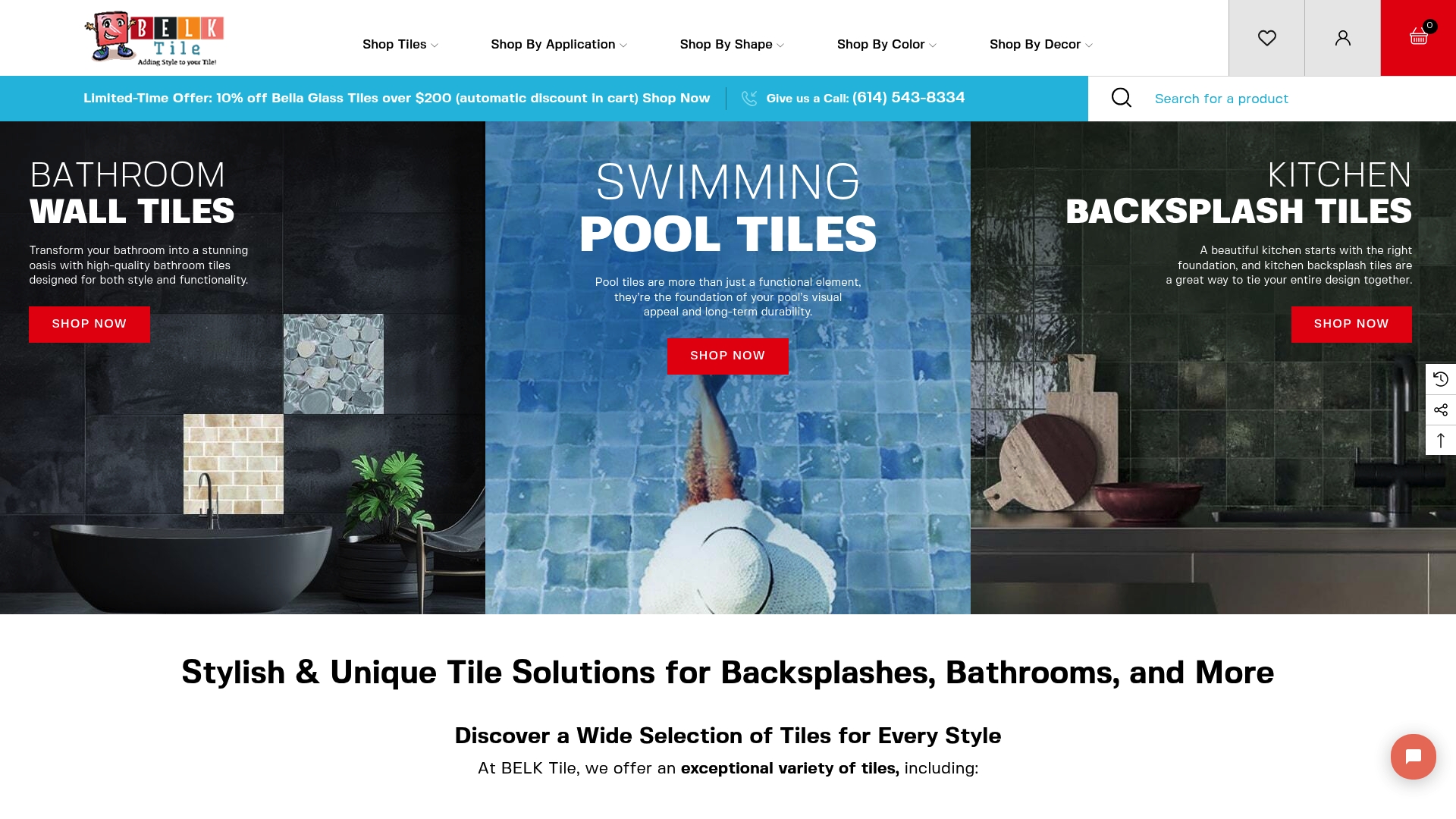What is Subway Tile? A Comprehensive Explanation
Posted by Mike Belk on Aug 18, 2025

Subway tile started as a smart solution for the dark, dirty subways of New York City back in 1904. These neat white rectangles were picked because they made stations look brighter and stayed easy to clean, which was a massive upgrade compared to most building materials at the time. But here’s the surprise. Over 100 years later, the same 3x6 inch tile shows up everywhere from trendy coffee shops to bathroom remodels across the globe. Subway tile wasn’t meant to be stylish at all, yet it somehow became the timeless look everyone keeps coming back to.
Table of Contents
- The Origin And History Of Subway Tile
- The Characteristics And Design Of Subway Tile
- Why Subway Tile Is A Popular Choice In Interiors
- Types Of Subway Tile And Their Applications
- Integrating Subway Tile Into Various Design Styles
Quick Summary
| Takeaway | Explanation |
|---|---|
| Subway tiles originated from NYC subway construction. | They were first used in 1904 for their durability and hygienic benefits. |
| Versatile aesthetics make subway tiles widely popular. | Their simple design allows them to fit various styles, from classic to modern. |
| Multiple layouts enhance design impact. | Designers can use patterns like herringbone or vertical stacking for visual interest. |
| Subway tiles are low-maintenance and durable. | Their non-porous surface resists moisture and prevents bacterial growth, ideal for kitchens and bathrooms. |
| Available in various materials and colors. | Options range from traditional ceramic to glass and natural stone, providing diverse choices for design. |
The Origin and History of Subway Tile
Subway tile emerged from a fascinating intersection of urban infrastructure and design innovation during the early 20th century. Architectural historians trace its origins to the New York City subway system’s construction in 1904, where these distinctive rectangular ceramic tiles became more than just a functional design element.
The Birth of an Iconic Design
The original subway tiles were strategically chosen for their exceptional durability and hygienic properties. White glazed ceramic tiles with clean, rectangular shapes were selected to create bright, easily cleanable surfaces in underground transit stations. Their glossy finish and light-reflecting qualities solved critical infrastructure challenges by improving visibility in dimly lit subway tunnels.
Architectural and Design Evolution
Initially a purely utilitarian solution, subway tiles quickly transcended their original purpose. Interior designers and architects recognized the tile’s versatile aesthetic potential. The simple 3x6 inch rectangular format became a design standard, migrating from subway stations into residential kitchens, bathrooms, and commercial spaces. Learn more about timeless tile design as these tiles transformed from infrastructure necessity to design classic.
Key characteristics that contributed to subway tile’s widespread adoption include:
- Exceptional durability and water resistance
- Simple, clean visual appearance
- Easy maintenance and hygienic surface
- Adaptable to multiple design aesthetics
Today, subway tiles represent more than a historical design element. They symbolize a perfect blend of functional engineering and aesthetic elegance, continuing to inspire designers and homeowners worldwide with their understated yet sophisticated charm.
The Characteristics and Design of Subway Tile
Subway tile represents a quintessential design element characterized by its distinctive rectangular shape and versatile aesthetic potential. Architectural design experts note that these tiles typically measure 3 inches by 6 inches, though contemporary interpretations have expanded this traditional dimension.
Material and Composition
Traditionally crafted from ceramic, subway tiles now encompass a wide range of materials including porcelain, glass, and natural stone. Ceramic remains the most classic and popular option, offering exceptional durability and a clean, uniform appearance. The material’s inherent properties make it resistant to moisture, stains, and wear, ensuring longevity in various applications from kitchen backsplashes to bathroom walls.
Design Versatility and Aesthetic Configurations
Subway tiles transcend their original utilitarian roots through remarkable design flexibility. Explore unique design possibilities that showcase their adaptability across different architectural styles. Designers can manipulate these tiles through various laying patterns, creating visual interest and dynamic surfaces:

- Horizontal Offset: Traditional brick-like arrangement
- Vertical Stacking: Clean, modern geometric presentation
- Herringbone: Sophisticated diagonal pattern
- Diagonal: Dynamic, movement-inducing layout
Color variations further expand subway tiles’ design potential. While white remains the classic choice, contemporary options range from subtle neutrals to bold, statement-making hues. The tiles can be glazed or unglazed, providing additional textural and aesthetic variations that suit diverse design preferences and architectural contexts.

Why Subway Tile is a Popular Choice in Interiors
Subway tiles have become a staple in modern interior design, transcending their original functional purpose to become a beloved aesthetic element. Interior design professionals recognize these tiles as a versatile solution that bridges classic and contemporary design sensibilities.
Practical Advantages in Home Design
The enduring popularity of subway tiles stems from their exceptional practical benefits. Durability and low maintenance make them an ideal choice for high-traffic areas like kitchens and bathrooms. Their smooth, non-porous surface resists moisture, prevents bacterial growth, and cleans easily with minimal effort. Explore innovative bathroom design solutions that leverage these practical advantages.
Aesthetic Flexibility and Design Impact
Subway tiles offer unparalleled design versatility that appeals to diverse aesthetic preferences. Their simple rectangular format allows for multiple installation patterns that can dramatically transform a space. Designers and homeowners appreciate the ability to create visual interest through:
- Classic Horizontal Layouts: Timeless and traditional
- Vertical Stacking: Modern and sleek
- Herringbone Patterns: Sophisticated and dynamic
Color and finish variations further enhance subway tiles’ design potential. From crisp white ceramics to bold colored glass tiles, these design elements can complement virtually any interior style. Whether creating a minimalist modern kitchen or a vintage-inspired bathroom, subway tiles provide a reliable design foundation that adapts to changing design trends.
Beyond aesthetics, subway tiles represent an intelligent design choice that balances form and function. Their ability to create clean, visually appealing surfaces while offering practical benefits continues to make them a go-to solution for architects, designers, and homeowners seeking timeless interior design solutions.
Types of Subway Tile and Their Applications
Subway tiles represent a diverse category of design materials with multiple variations suited to different architectural and design requirements. Tile industry experts recognize that material composition plays a crucial role in determining a subway tile’s performance and aesthetic potential.
Material Variations
Ceramic subway tiles remain the most traditional and widely used option, offering exceptional durability and classic appeal. Porcelain tiles provide enhanced density and water resistance, making them ideal for high-moisture environments. Glass subway tiles introduce a contemporary aesthetic with translucent and reflective qualities that can dramatically transform interior spaces. Discover unique tile application techniques that leverage these material differences.
Application Contexts
Subway tiles demonstrate remarkable versatility across residential and commercial design environments. Their adaptable nature allows them to function effectively in multiple settings:
- Kitchen Backsplashes: Protecting walls while creating visual interest
- Bathroom Walls: Providing moisture-resistant, hygienic surfaces
- Commercial Spaces: Offering durable, easy-to-clean wall treatments
- Shower Enclosures: Creating seamless, waterproof installations
The selection of subway tile depends on specific environmental demands, aesthetic preferences, and functional requirements. Natural stone varieties like marble or travertine offer luxurious options for high-end residential and commercial projects, while engineered ceramic tiles provide budget-friendly, low-maintenance solutions for practical design applications.
To help you easily compare the advantages and uses of different subway tile materials, here is a table summarizing their key characteristics and ideal applications:
| Material | Key Characteristics | Ideal Applications |
|---|---|---|
| Ceramic | Durable, classic look, easy to maintain | Kitchens, bathrooms, backsplashes |
| Porcelain | Dense, water-resistant, highly durable | High-moisture areas, showers, commercial |
| Glass | Reflective, modern, translucent or opaque options | Accent walls, contemporary spaces |
| Natural Stone | Luxurious, varied texture and color, porous nature | High-end designs, feature walls |
Integrating Subway Tile into Various Design Styles
Subway tiles represent a remarkably adaptable design element capable of complementing diverse architectural aesthetics. Interior design professionals recognize these tiles as a chameleon-like material that seamlessly transitions between traditional and contemporary design vocabularies.
Classic and Traditional Designs
White ceramic subway tiles remain the quintessential choice for classic interior styles. Their clean lines and uniform appearance perfectly capture traditional design sensibilities, creating elegant backdrops in kitchens and bathrooms. Arranged in classic horizontal patterns, these tiles evoke timeless sophistication reminiscent of early 20th-century architectural traditions. Explore innovative bathroom design techniques that blend classic and modern elements.
Contemporary and Minimalist Approaches
Modern design enthusiasts appreciate subway tiles for their sleek, understated aesthetic. Contemporary applications often feature:
- Vertical Stacking: Creating visual height and clean lines
- Monochromatic Color Schemes: Emphasizing geometric precision
- Large Format Tiles: Minimizing grout lines for seamless appearances
- Unexpected Color Combinations: Introducing bold design statements
The true versatility of subway tiles lies in their ability to serve as both background and focal point. Whether creating a subtle neutral backdrop or making a bold design statement, these tiles offer designers unprecedented flexibility in expressing architectural vision across multiple aesthetic paradigms.
To better understand how subway tiles can be used in various design styles, see the table below which highlights typical features and stylistic approaches:
| Design Style | Common Subway Tile Features | Typical Layout/Pattern |
|---|---|---|
| Classic/Traditional | White ceramic, glossy finish | Horizontal offset (brick) |
| Contemporary | Bold colors, glass or large format tiles | Vertical stack, monochrome |
| Minimalist | Subtle tones, matte or gloss, minimal grout lines | Large format, vertical/herringbone |
| Transitional | Combination of classic shapes & modern finishes | Mixed patterns, accent pieces |
Ready to Bring the Timeless Appeal of Subway Tiles to Your Space?
If you found yourself drawn to the durability, easy maintenance, and classic versatility of subway tiles in our comprehensive explanation, you are not alone. Many homeowners and designers struggle to find tile solutions that balance history, style, and real-world functionality for kitchens, bathrooms, and beyond. BELK Tile offers a curated selection inspired by the exact qualities discussed in the article so you can create a stunning look that lasts.

Start exploring the difference that true design flexibility makes. Discover endless possibilities in subway tile applications or get inspired by fresh ideas for your bathroom makeover. Your next project deserves products that match your vision and stand up to daily life. Visit BELK Tile now and find high-quality subway tiles made to transform your home or business. Act now to turn inspiration into reality.
Frequently Asked Questions
What is subway tile made of?
Subway tiles are traditionally made from ceramic, but they can also be crafted from porcelain, glass, and natural stone. Ceramic remains the most popular option due to its durability and uniform appearance.
What are the common sizes of subway tiles?
Subway tiles typically measure 3 inches by 6 inches, but contemporary designs can feature various sizes and formats to suit modern aesthetics.
How are subway tiles installed?
Subway tiles can be installed using various patterns, including traditional horizontal offset, vertical stacking, herringbone, and diagonal layouts. Each pattern offers a distinct visual impact while maintaining the tile’s classic appeal.
Why are subway tiles a popular choice for home interiors?
Subway tiles are favored for their practicality and aesthetic flexibility. They are durable, low-maintenance, and can complement a range of design styles, from traditional to contemporary, making them ideal for spaces like kitchens and bathrooms.



